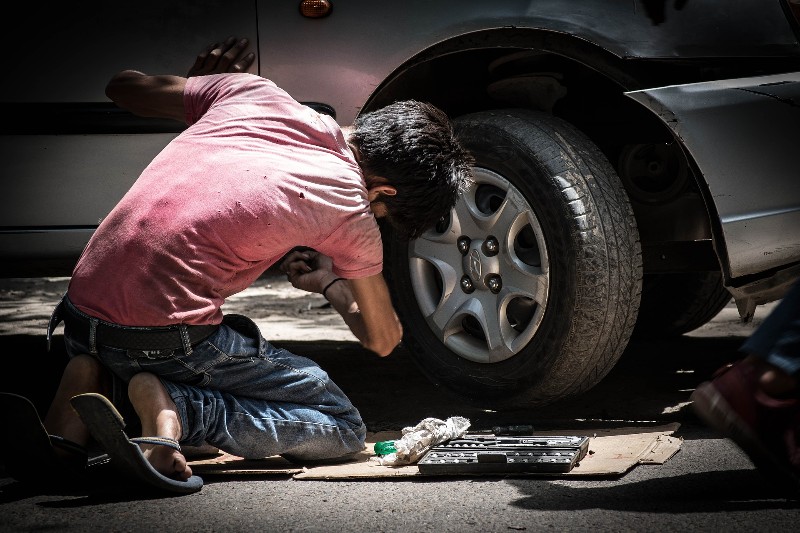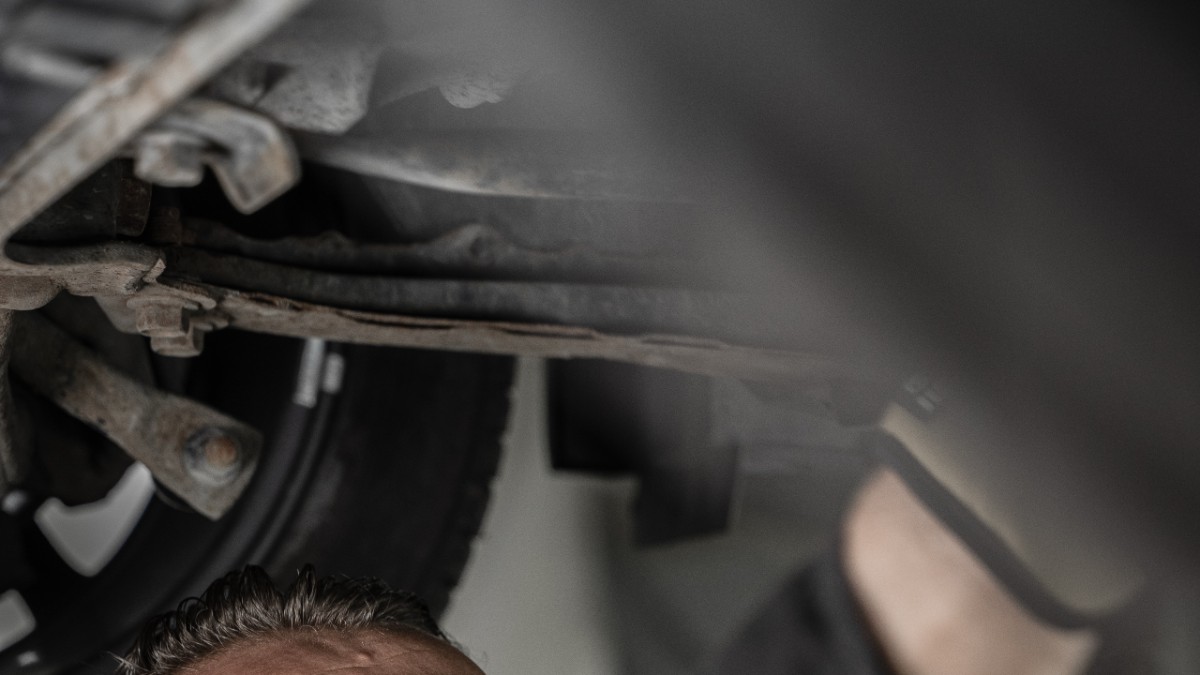If you are familiar with tie rods, you’ll know they are an integral part of a vehicle’s steering. As their name implies, tie rods ‘tie’ or ‘connects’ a vehicle’s steering rack to the steering arm and transmits the force from the former to the latter. Depending on your driving habits or conditions, the tie rod of your automobile can become bent. What are the symptoms you’ll see when this happens? Is there a solution to bent tie rods? We look into these and more in this article.
Symptoms of a bent tie rod include a loose steering wheel, poor front-end alignment, abnormal tire wear, and vibrating sounds amongst others. The solution is to replace the bent tie rod with a new one.
It’s common to see people trying to straighten a bent tie rod. But you should never do this as the tie rod becomes more compromised and can fail at any time. Below, you’ll learn more about tie rods, symptoms of bent or malfunctioning tie rods,
Becoming Familiar With Tie Rods
As mentioned at the beginning of this article, tie rods are important components of any car, jeep, SUV, or truck. Located in the front end, tie rods transmit force to the front tires of an automobile for inward/outward rotation. So, as you turn the steering wheel, the tie rods help you push and pull the front tires. Tie rods are also important for maintaining front-end alignment.
From what we’ve discussed above, it’s easy to see why tie rods are important accessories. Many people wonder how long their tie rods are supposed to last before being replaced. The answer to that question depends on several factors.
It’s important to point out that tie rods will undergo wear and tear like any other components in your vehicle. However, the rate at which they wear out also depends on your driving conditions. If you live in an area with potholes or bad roads, then your tie rods will wear out faster than usual. It’s recommended you inspect your tie rods from time to time to evaluate their condition.
If you can’t inspect your vehicle from time to time, then you should know the signs of a bad or failing tie rod.
Signs Of Bent/Failing Tie Rods
When your tie rod becomes damaged from normal tear and wear or from impacts against potholes, rocks, and other obstacles, it starts to malfunction and there are some signs you’ll observe. Whenever you see any of these signs, inspect your tie rod to see if there’s any sign of physical damage like it being bent. Even if there’s no sign of physical damage, the tie rod might still be malfunctioning. Ultimately, you’ll want to take your vehicle to a mechanic for diagnosis.
Below are signs that tie rods are not operating as they should:
Steering Wheel Vibrates
If you’ve been paying attention till now, you already know that tie rods are a key part of your vehicle’s suspension as they keep the suspension solid and tight. If there’s any problem with the tie rods, especially their ends, the suspension won’t be as tight as it should be. Also, the force that the tie rods transmit from to the front tires won’t be as smooth.
This will manifest in the steering wheel shaking or vibrating when the car is in motion. The shaking movement will only get worse when accelerating or turning corners. Driving won’t be as smooth as the driver is more prone to making mistakes.
So, whenever you notice your steering wheel vibrating or shaking, it’s obvious there’s something wrong with the suspension or alignment and you should have a mechanic check out your car asap.

Poor Front End Alignment
Tie rods also play an important part in the front-end alignment. When the tie rod is bent or damaged, the front end alignment becomes compromised and this manifests as the vehicle will veer to either side when pointed forward.
A properly aligned vehicle should maintain a straight line if the driver directs it straight. But when it becomes misaligned, the vehicle starts to tilt to the left or right even if the driver removes their hands from the steering wheel for a short time.
Loose Steering Wheel
Your steering wheel isn’t supposed to feel too tight or loose. It should be relatively firm and when it deviates from this state, it’s an obvious sign that something is wrong somewhere. A bad or malfunctioning tie rod can make the steering wheel loose.
Never take a loose steering wheel lightly as your next stop should be an auto shop. If you don’t fix the loose steering wheel as soon as possible, it’ll deteriorate further and there’s the possibility of a complete lack of steering occurring.
Abnormal Sounds
There are several reasons why you may hear abnormal or weird sounds coming from your car. Oftentimes, it’s due to metal-on-metal contact and in most situations, those metals aren’t supposed to come in contact.
When the tie rods are damaged or have lost lubrication, chances are you’ll hear a high-pitched sound coming from your vehicle. Note that this doesn’t automatically mean the problem is from the tie rods but you’ll definitely want to find out the underlying cause.
Abnormal Tire Wear
While tire wear is a normal occurrence, the wear should occur gradually over time. But when tires start to wear out faster and unevenly, then there’s a problem somewhere. And sometimes, the tie rods are the culprit.
It’s worth mentioning that uneven tire wear can be caused by improper tire pressure, failure to rotate tires, bad alignment, and so on. So, a mechanic may need to check out the vehicle to determine the actual cause of uneven tire wear.
Vehicle Vibrates
Bad tie rods can make the entire vehicle vibrate during motion with the vibrations intensifying with acceleration. This definitely ruins the driving experience and makes driving uncomfortable. In most cases, the entire vehicle will only start to vibrate after extensive damage or complete failure of the tie rods. In this situation, it’s best to have the vehicle looked at by a mechanic for repair.
How To Fix a Bent Tie Rod?
If your tie rod is bent or malfunctioning, you shouldn’t try to repair it yourself. Usually, the solution to the problem is to replace the tie rod, the cost of which may range from $100 to $400 depending on the make and model of your vehicle, quality of parts, and workmanship fees.

